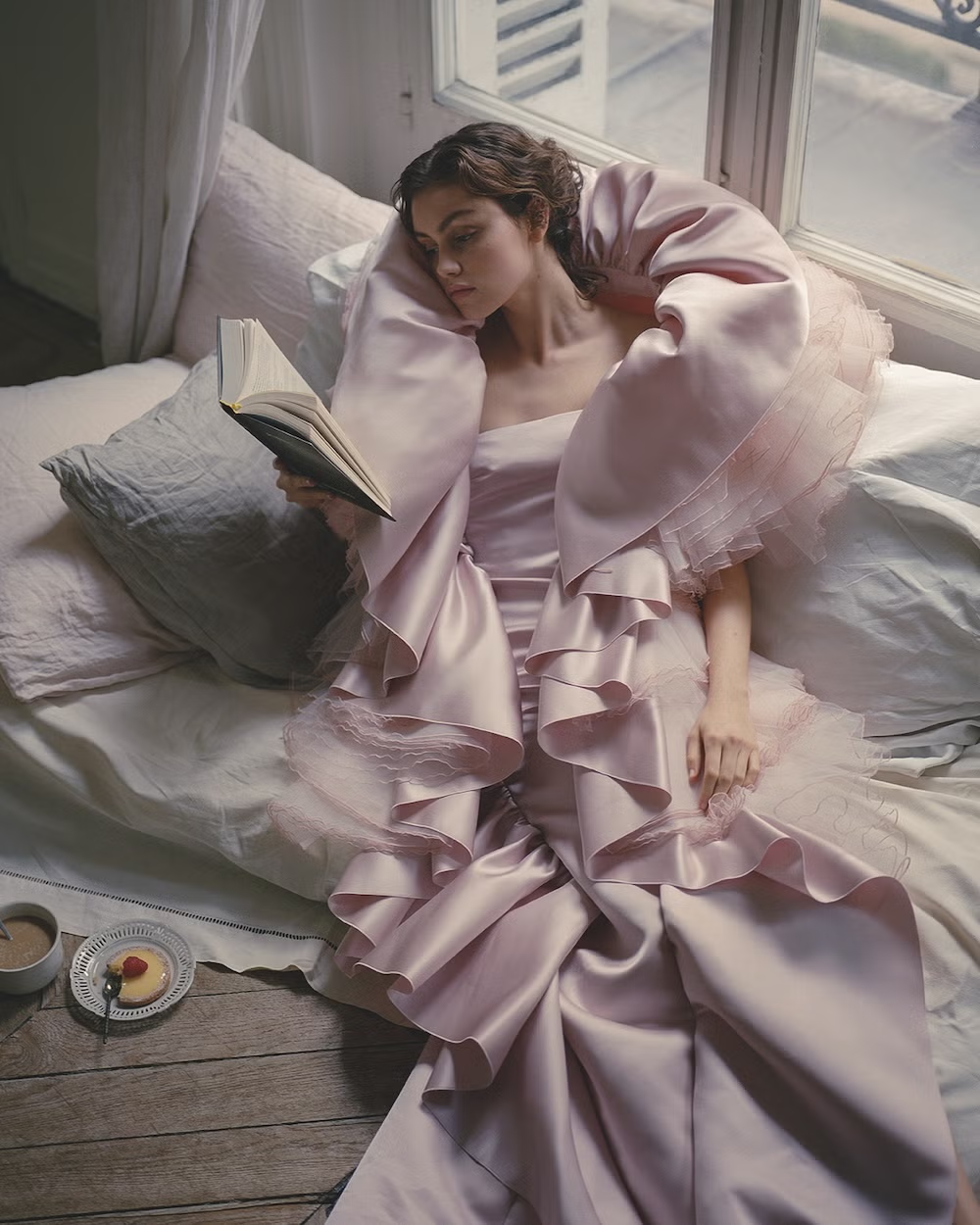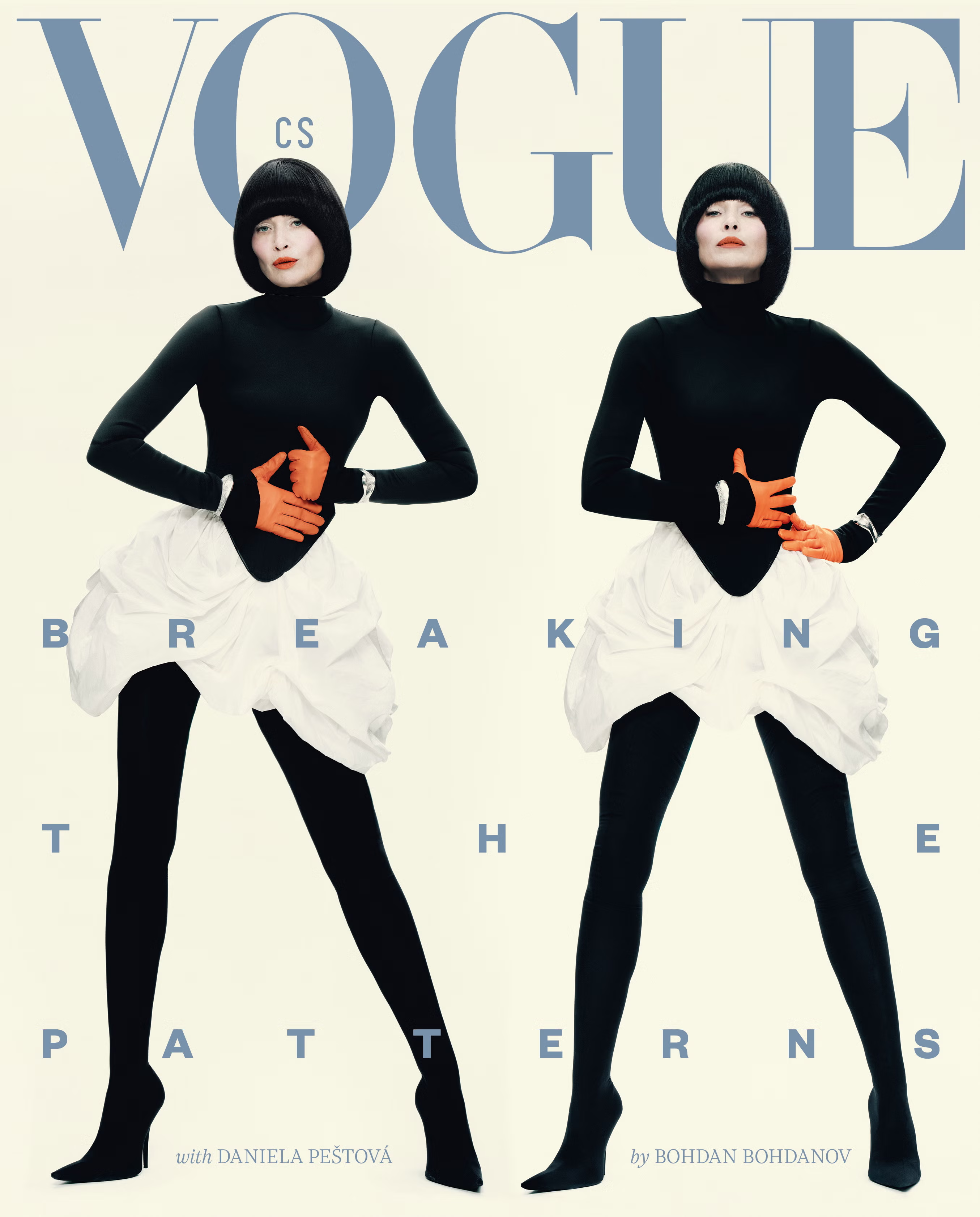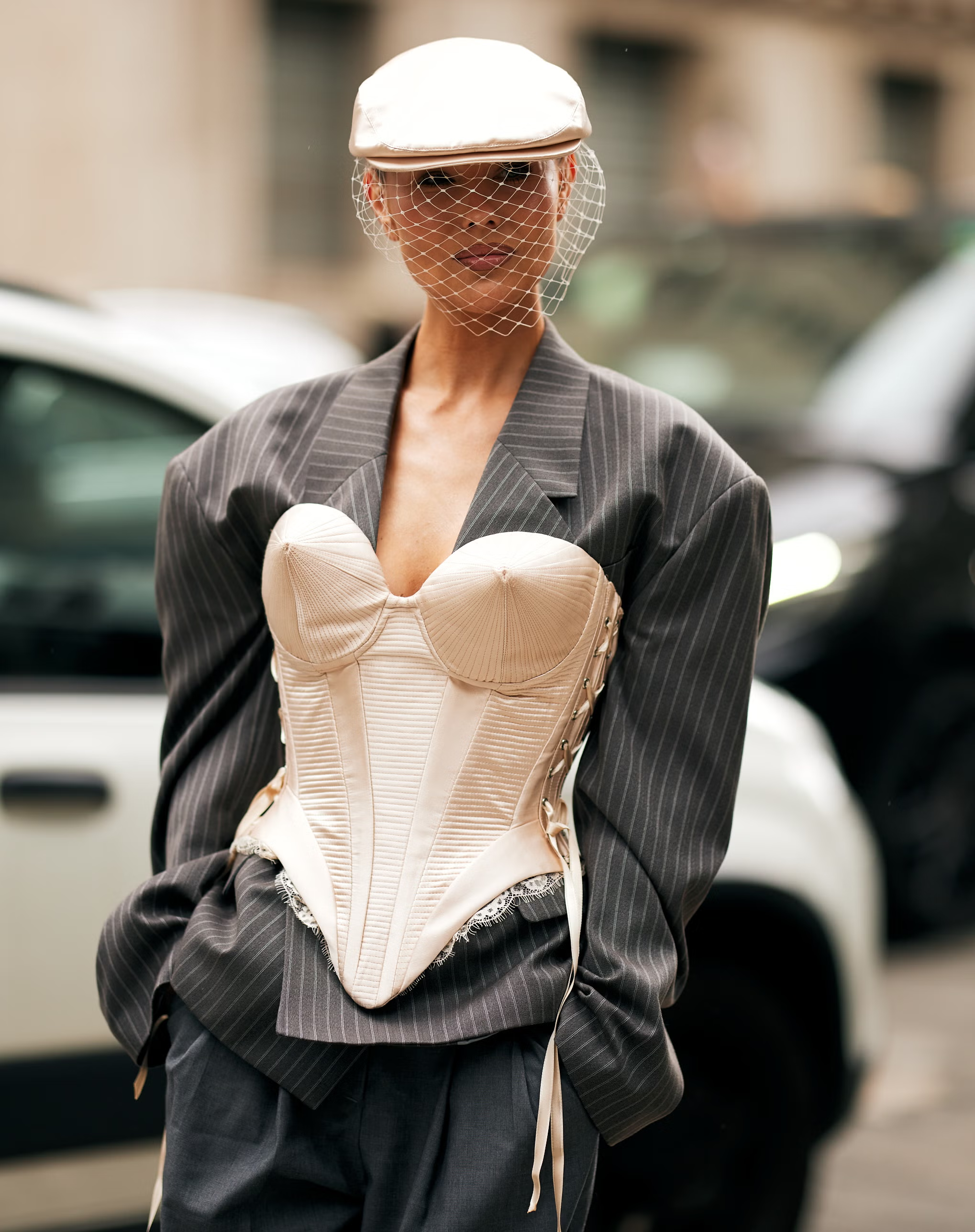Vogue CS in English
Sarah Mower: Is Fashion Art?
Sarah Mower5. 3. 2020
In January this year, we walked into the Jeu de Paume, one of the most storied art galleries in Paris, the museum on the corner of the Place de La Concorde which used to house the most sublime works of the French Impressionists. Inside, there was another sublime collection being exhibited - Giambattista Valli’s haute couture pieces for spring 2020. Instead of a runway show, he decided to distil his work - truly gorgeous, sculptural flourishes of satin and chiffon in an incredible array of colour- as an exhibition. The wondrous set, incredibly spot-lit, had audiences spellbound at the “private view”. Later, Giambattista opened the space to the public to enjoy.

Foto: Thibault-Théodore Babin
It was just one example of the 21st century cultural atmosphere in which the worlds of fashion and art have merged and crossed over, breathing the same air, and sharing an equal platform. What Giambattista said to me about the value of haute couture that night really sticks in my mind. “ These clothes are handmade for the individual women who commission them. They are not disposable”, he said. “Women collect, treasure and keep them. Maybe their daughters and granddaughters will wear them. And in time, they will end up donated to museums, to be exhibited again as part of history.”
Is fashion art? It’s a question which used to seem preposterous only a few decades ago. What do we think of as “art”, anyhow? If, for a start, we define it as work which is valued enough to be worthy of being exhibited in private galleries and state museums, and which commands huge prices and is traded in auction houses - then today fashion has undoubtedly crossed over that threshold.
In 2019, Christies sold an Yves Saint Laurent spring-summer 1988 haute couture jacket embroidered with a facsimile of Van Gogh’s Sunflowers for a record 389,000 euros to the National Gallery of Melbourne. A young Naomi Campbell modelled it in a collection in which Saint Laurent also made jackets and dresses with interpretations of Van Gogh irises and Matisse’s doves. It happened to be the first couture show I ever saw, in my first job as a young Vogue reporter. I couldn’t believe my eyes. As someone who had recently graduated from studying the history of art and English at university, I never dreamed that my very first review would be to bring back news of the rapturous reception for the highest fashion designer in Paris, quoting high art on the catwalk.
I remember vividly thinking “ This feels significant!”. Nobody used the term “disruptive”, meaning risky and game-changing in those days, but that’s how it felt. Because up until then, the class divide between art and fashion had been iron-clad. Fine art had looked down on the mere makers of clothes for centuries. According to the hierarchy of the exalted fine art tradition, fashion belonged to a lower form of “decorative art” - if that. It was mere trade, frivolous, ephemeral. Non-intellectual. Female. Dismissed.
Yet here was Yves Saint Laurent, himself a great art collector, whose clientele were the art-collecting international super-rich of the Eighties, clearly drawing an equivalence between art for walls and art for wardrobes. The very women likeliest to have Van Goghs decorating their homes applauded wildly, laughed and bought. And whomever sold her Saint Laurent jacket last year had the biggest laugh of all: her fashion-art investment had paid her back many times over.
But already in the 1980s , a far more radical, underground challenge to the values of the patriarchal art establishment was going on. In January 2020, it surfaced once and for all at Christian Dior when Maria Grazia Chiuri asked Judy Chicago, the pioneering American feminist artist to collaborate on the set of the haute couture show. Judy Chicago is a key figure in the battle to change the perspective of art history to include and reinstate women to the solely male narrative of western art. One of the ways that she went about changing the narrative in the Seventies and Eighties was to use needlework - the ‘lowly’ women’s medium- to create art. Here was the perfect alliance for Maria Grazia Chiuri, who has consistently brought her interest in feminism to Dior since 2014 - a revolutionary heroine of art who honours the very same materials and techniques as those which go into creating clothes. The incredible ability of a fashion brand to be a power-house which can radiate cultural messages beyond merely selling clothes came home as we stepped into the show venue. It was hung with cloth banners which Chiuri had commissioned from Chicago, asking, “ What if Women Ruled the World?”. In their very making they embodied the empowerment of women and girls, because the embroidery was carried out by them at the Chanakya School in India, training them with skills to earn independence in a culture where traditionally crafts are handed father to son.
The show tent itself was a female-shaped art installation - a realisation of “The Female Divine” which Chicago had proposed as a public sculpture in 1977, but had never been able to make. Conversations with the artist triggered the designer to create a couture collection about goddesses - the ancient female powers once worshipped in her own Italian history, before monotheistic Christianity took over. Can haute couture, with all its labour, skill and expressive beauty, be considered art? That was one unspoken question Maria Grazia Chiuri seemed to be posing. If it is, this occasion also put into practice the cross-cultural inclusivity that feminism insists upon - changing the narrative so that “craft” and “ women’s work” can be viewed and valued for its expressive significance on an equal footing with art.
Art’s dismissal of fashion had everything to do with gender - the centuries-old western view that clothes were women’s concern, and were largely made by them, even if they were the work of important male designers. But the Seventies feminist movement coming from America was not the first time that a generation of women had played a vital role in creating a new space between art and fashion. They were the many Eastern European, Russian and Ukrainian-born women of the early twentieth century who took part in the avant-garde movement to design the socialist revolution. It is part of the shame of art history that the importance of these incredible women has been written out and forgotten, but the roll-call of women who pioneered the blurring of boundaries between high art, textiles and fashion history is long. It includes Natalia Goncharova, Sophie Tauber Arp, Alexandra Ekster, Sonia Terk Delaunay, Hannah Hoch and Anni Albers, all of them great artists in their own right who happenned to apply their talent to textiles, prints and clothing in the early days of the Soviet Union in the 1910s and 1920s.
It’s taken a century for the barriers of perception and prejudice to dissolve between art and textiles and fashion. I’ve noticed it happening at the Frieze art fair over the last two years - how so many works using textiles, weaving, cloth and embroidery are now being exhibited by galleries. Handwork and craft moving into a place that has been dominated for years by cold, machine-made and digitial work feels revolutionary. And so much more human.
But why should fashion need the art world to “validate” it? If we think that way, we are still agreeing that “art” is on a superior level; the judge of all merit. This is a point which annoys Miuccia Prada – who, of course, has one foot in both worlds as a fashion designer and major art collector with her Fondazione Prada. “I find the conversations that people in fashion have about what is happening in the world to be much more relevant”, she once said. “In fashion we have to be aware of everything, all of the time - politics, film, social movements, science, history, feminism. It all goes into our work.” So fed up is she of artistic intellectual snobbery - shaking off the feeling that she is “only” a woman designer, a member of a lesser class - that she’s now insisting that she makes straightforward clothes, that are clothes for work and life. It is not the failure of fashion to be accepted - this is a criticism of the art establishment itself.
We have to admit that the fashion world has a lot to be ashamed of. The damage to the environment and humanity that fast fashion and overconsumption is causing has no excuses. There is nothing whatsoever artistic about burning, dumping and filling oceans with textile waste. Yet, in the personal relationship with the clothes we keep and treasure - and why we do - there is the glimmer of the hope of redemption. Valuing clothes and appreciating the craft of how they were made is a start. It shows the connecting thread that makes us think of women workers and their skills, how they are interwoven with our own histories. Memories of what our mothers and grandmothers made for themselves and us; appreciation of the traditional peasant crafts of our own countries - all of this is what makes fashion important to us personally, but also on levels which deserve to be recognised, studied, celebrated.
And yes: exhibited in museums and galleries. If we regard great art as a medium which transmits important reflections of the time it was made in, speaks of human emotions and whose presence is capable of educating and moving people to wonder - then clothes definitely belong in that category today. It is a revolution of our times that visitor numbers to fashion exhibitions at the Met in New York can rival landmark art shows, that the Christian Dior Designer of Dreams exhibition at the V&A smashed records, and so on. It seems normal to young people now that this should be the case, but it’s a cultural breakthrough that has only happened in the last ten years. It’s the opposite of a violent revolution, but in fact fashion’s entry into the territory of the art and museum world has broken through a wall of exclusion. For centuries, western high art - the painting and sculpture,descended from the Greeks to the Old Masters of the Italian Renaissance to the Impressionists to the Cubists, the Expressionists, right up to the twentieth century American abstract artists - was a story which exluded women. Now, that has changed. Even if we cannot afford to buy haute couture, we can appreciate its wonder and meaning close up, with our own eyes. And, inspired by learning about the hidden histories about women’s cultures across the world, we can feel stronger, more tender, more valued in who we are ourselves. This is what great art can do to touch us. There is no difference.



